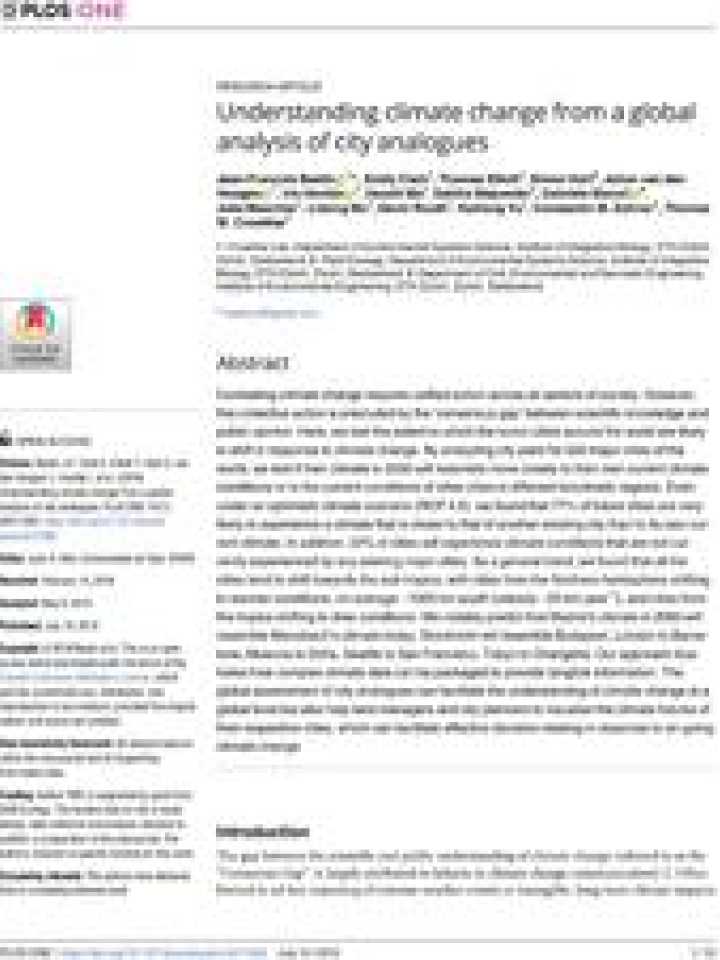Understanding climate change from a global analysis of city analogues
Combating climate change requires unified action across all sectors of society. However, this collective action is precluded by the ‘consensus gap’ between scientific knowledge and public opinion. Here, the authors test the extent to which the iconic cities around the world are likely to shift in response to climate change. By analyzing city pairs for 520 major cities of the world, the authors test if their climate in 2050 will resemble more closely to their own current climate conditions or to the current conditions of other cities in different bioclimatic regions. Even under an optimistic climate scenario (RCP 4.5), the report finds that 77% of future cities are very likely to experience a climate that is closer to that of another existing city than to its own current climate.
In addition, 22% of cities will experience climate conditions that are not currently experienced by any existing major cities. As a general trend, the analysis finds that all the cities tend to shift towards the sub-tropics, with cities from the Northern hemisphere shifting to warmer conditions, on average ~1000 km south (velocity ~20 km.year-1), and cities from the tropics shifting to drier conditions. The authors notably predict that Madrid’s climate in 2050 will resemble Marrakech’s climate today, Stockholm will resemble Budapest, London to Barcelona, Moscow to Sofia, Seattle to San Francisco, and Tokyo to Changsha. The authors’ approach illustrates how complex climate data can be packaged to provide tangible information. The global assessment of city analogues can facilitate the understanding of climate change at a global level but also help land managers and city planners to visualize the climate futures of their respective cities, which can facilitate effective decision-making in response to on-going climate change.
Explore further
